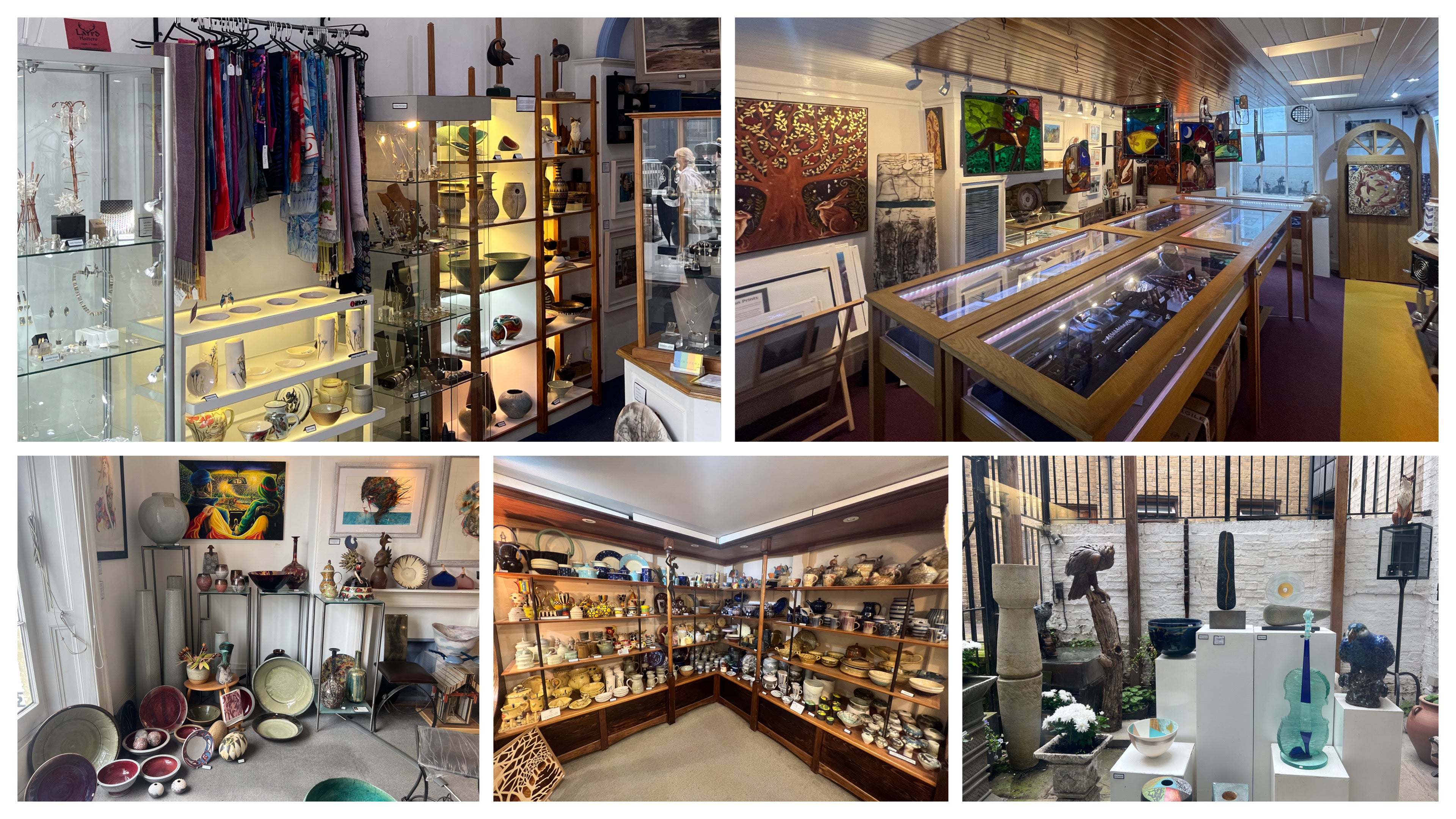
Tessa Wolfe Murray
 Tessa Wolfe Murray studied Fine Art at Ravensbourne College of Art followed by a postgraduate course in Ceramics at Goldsmiths College. She set up a studio at 4011/2 Workshops on leaving, combining her Ceramics business with part-time teaching in Adult Education.
Tessa Wolfe Murray studied Fine Art at Ravensbourne College of Art followed by a postgraduate course in Ceramics at Goldsmiths College. She set up a studio at 4011/2 Workshops on leaving, combining her Ceramics business with part-time teaching in Adult Education.
She left London for Yorkshire to share a studio and work part-time for ceramicist Anna Lambert, then moved to a multi-discipline studio in Leeds to concentrate full-time on her own work. Throughout this time she supplied shops, craft and fine art galleries in the UK and made contacts in Europe through participating in Ceramic Fairs in Holland and Belgium.
It was also a time of productive collaboration with the Conran Shop, designing and making ranges of vases and lamp bases which were sold in their shops worldwide.
A commission to make 20 vases and dishes for an Ikebana exhibition in Kyoto, Japan proved to be an exciting challenge resulting in the development of several new designs in her own work. In 2001 she moved to Biscuit Studio in Hove which she shared with ceramicist Kellie Miller. She is now based in a new studio in Lorna Road, Hove.
Tessa Wolfe Murray developed her smoke firing technique as a result of determined necessity coupled with a fascination with fire. The traditional method of burying a low unfired pot in sawdust under ground or in a container and leaving it to burn slowly for between 8 and 24 hours did not suit the pots she wanted to make.
She wanted her pots to be glazed internally so they could hold water and act as functional containers. In order to do this they had to be relatively high fired. Another hurdle was the slab building technique used to construct the pots: the joints were vulnerable to the fluctuating temperatures of a traditional sawdust firing. Her first attempts resulted in a succession of broken pots.
Rather than compromise on the element of function in her work, Tessa Wolfe Murray experimented with other methods of achieving smoke fired results. By soaking sawdust in white spirit and sprinkling the surface of a pot heated to 100 Celsius, a quick burst of flame and smoke resulted in the outer unglazed surface absorbing the carbon and minerals permanently. Only a firing in a gas or electric kiln to 600 Celsius would remove those smoke fired marks.
Tessa's designs are inspired by the wildness of the Sussex coast and often combine elements of sea grass, sand dunes and water to give such striking appearances.
